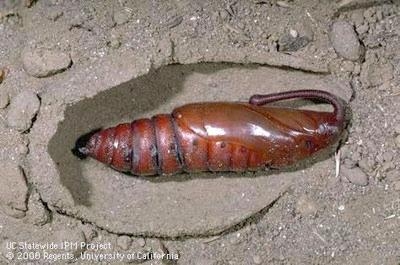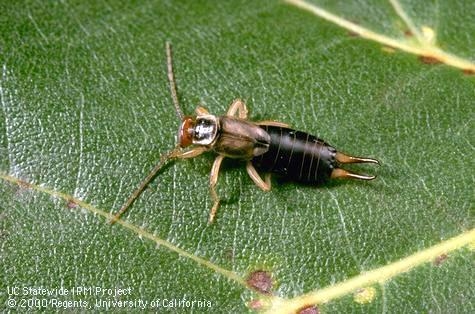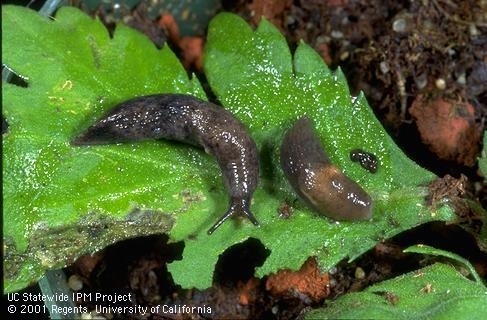
Tomato Hornworms hibernate in the soil beneath tomato plants. Till about four inches into the soil and discard cocoonshornworm pupae, which resemble two- inch-long, reddish footballs. Tilling prevents adult sphinx moths from developing.

Snails and slugs are among the most bothersome pests in gardens and landscapes. Because they prefer succulent foliage or flowers, they primarily are pests of seedlings and herbaceous plants, but are also serious pests of ripening crops and plants, growing close to the ground.. such as broccoli, cauliflower and strawberries, basil, beans, 
Snails and slugs are most active at night and on cloudy or foggy days. They seek hiding places out of the heat and bright light. During cold weather, snails and slugs hibernate in the topsoil. Remove places where they can hide during the day. Handpicking at night can be effective when done on a regular basis.
To keep your garden healthy. take on some preventative preventive maintenance this Fall:
- Perform General garden cleanup.
- Remove dead or diseased plants, weeds, and garden debris.
- Remove weeds from garden beds.
- Cultivate soil but avoid tilling more than an inch deep.
- Apply mulch such as wood chips, bark chips, sawdust, newspapers, or compost to suppress weeds, and help soil retain moisture.
- Plant a cover crop, such as fava beans, in your garden bed during fall. Till the plants into the soil in the spring following harvest. These crops to add nutrients to the soil, and making make it more fertile and healthier for spring plantings.
Visit the website at http://www.ipm.ucdavis.edu/PMG/menu.homegarden.html for more complete information.